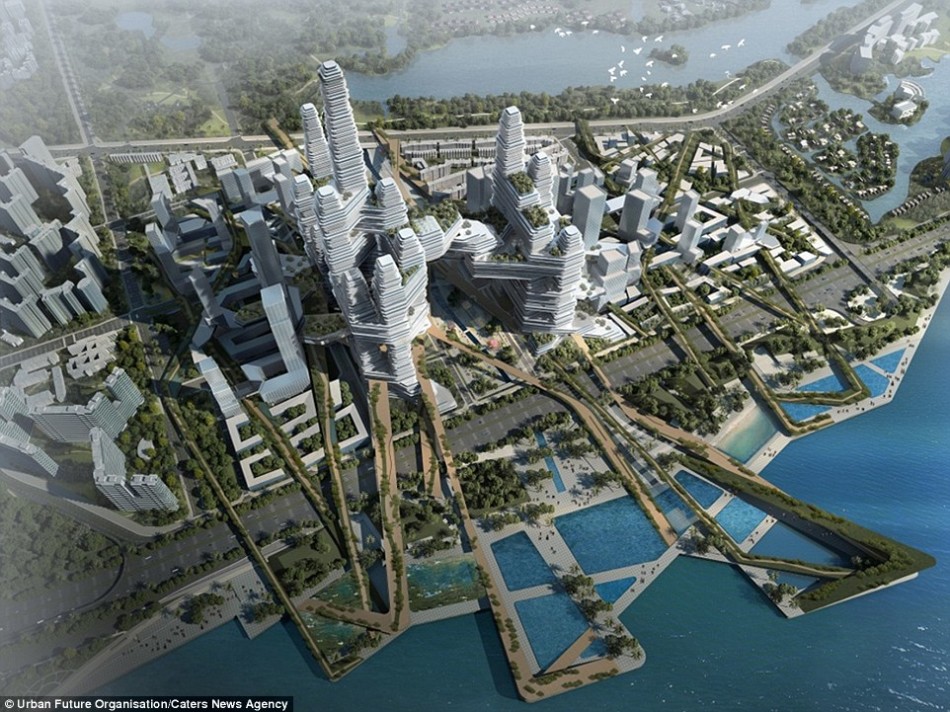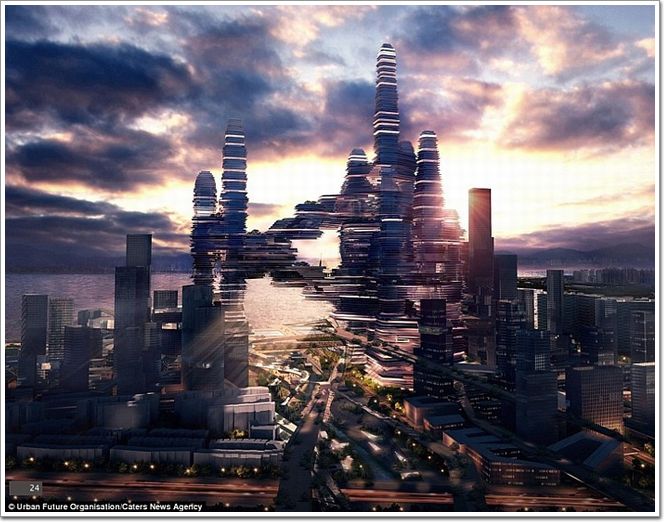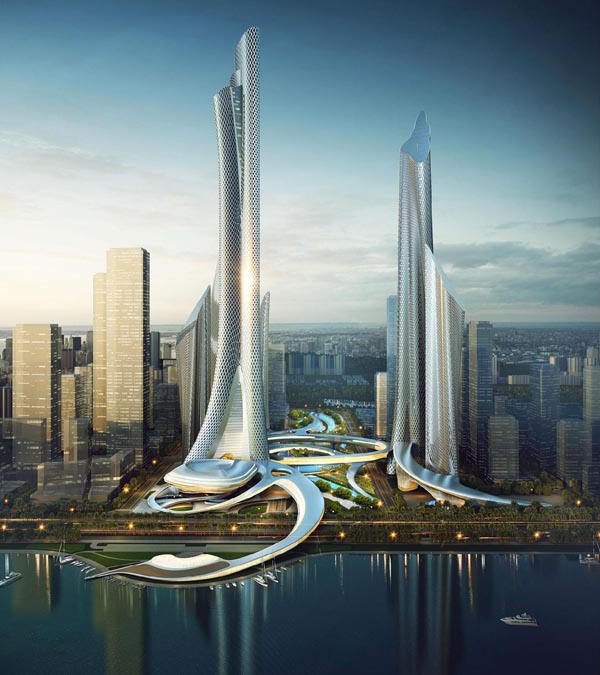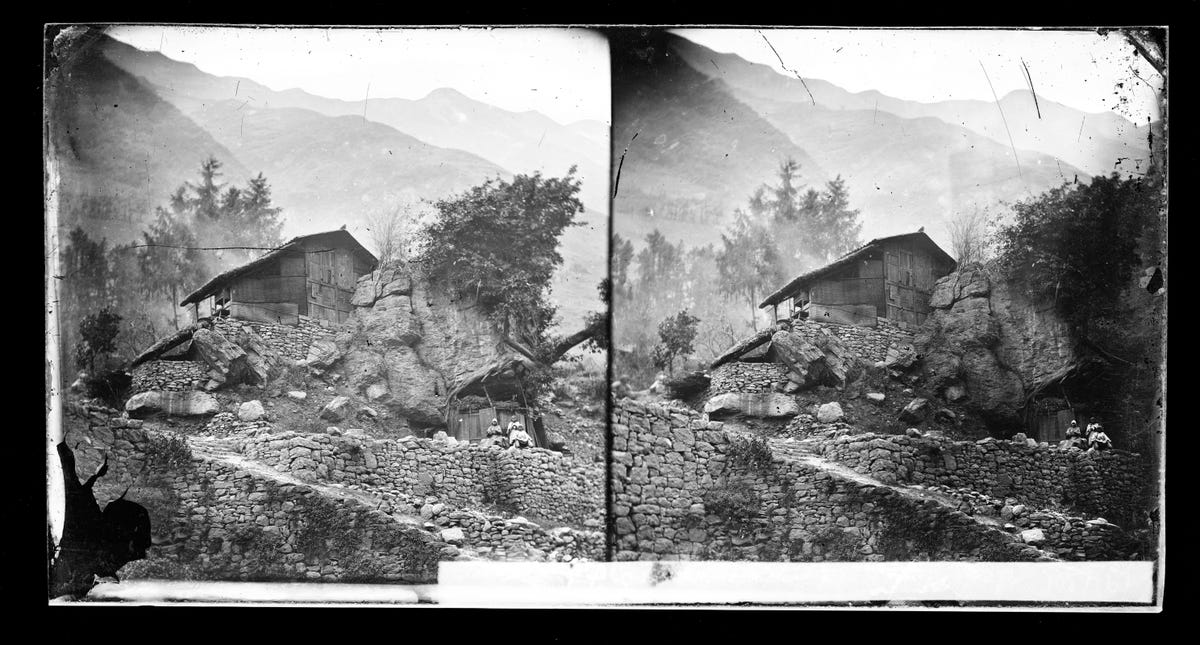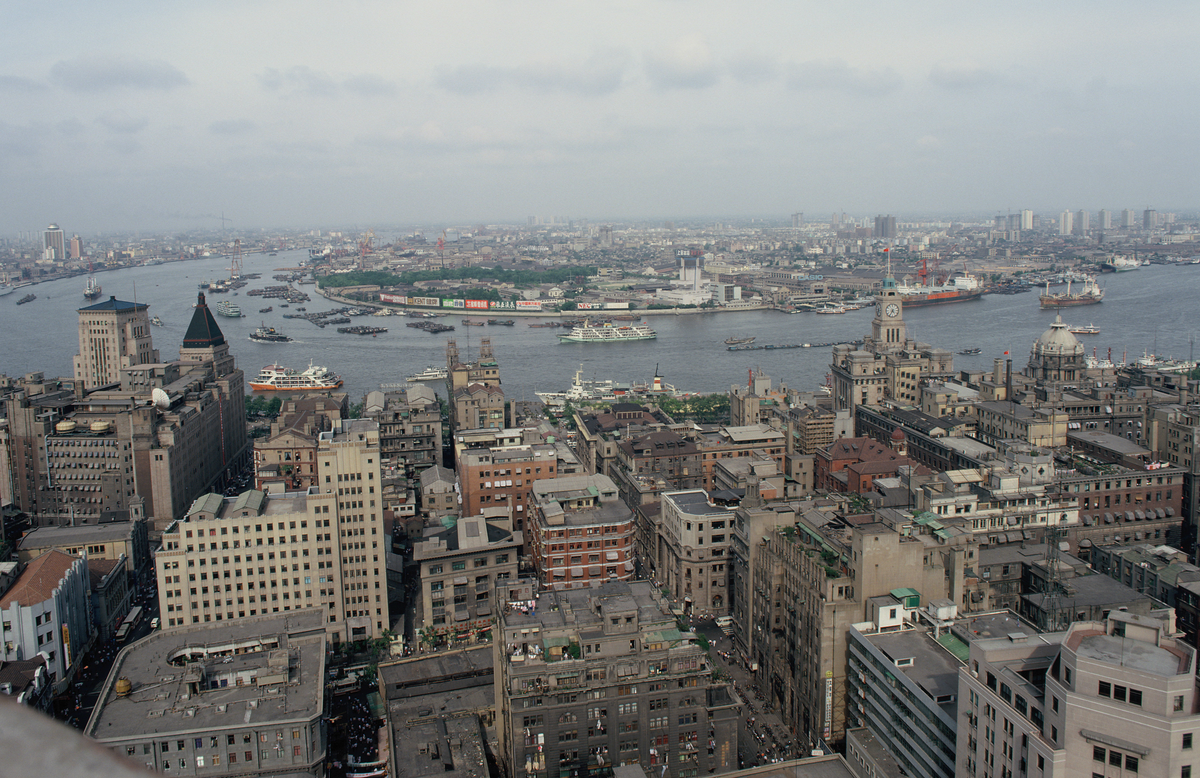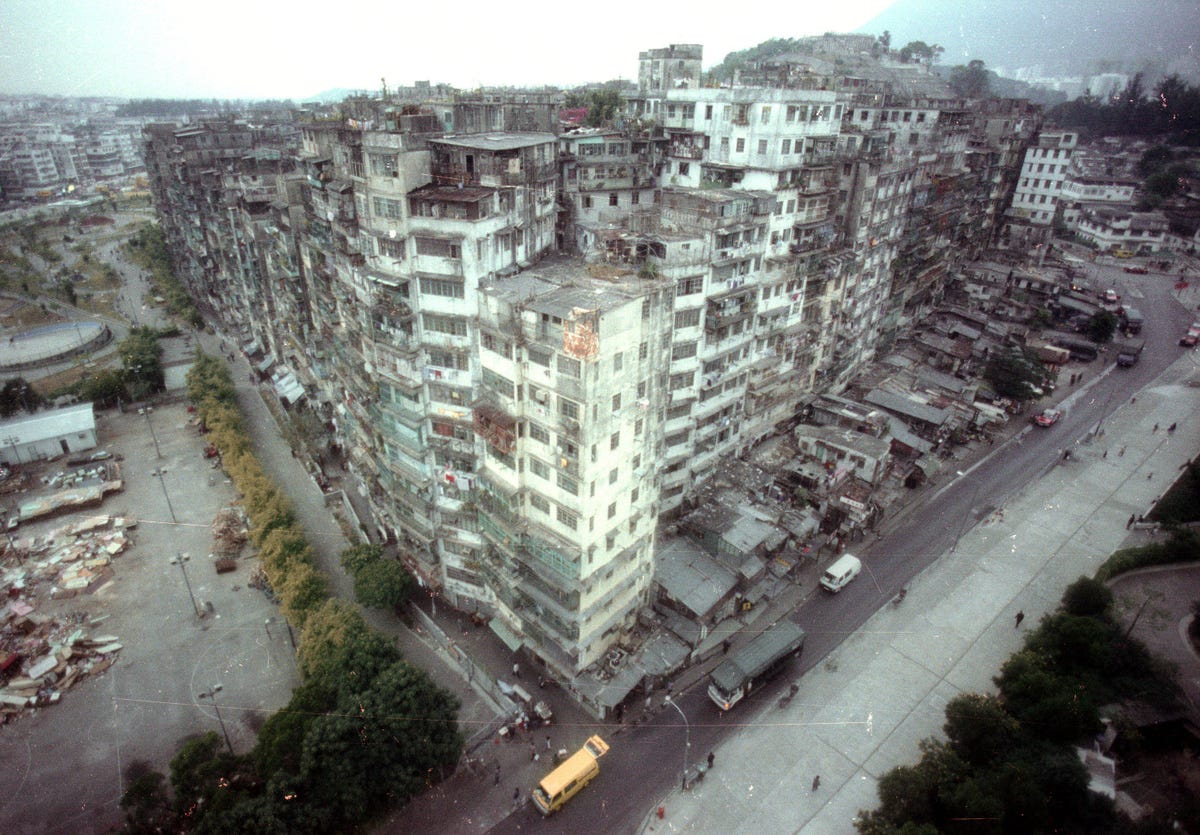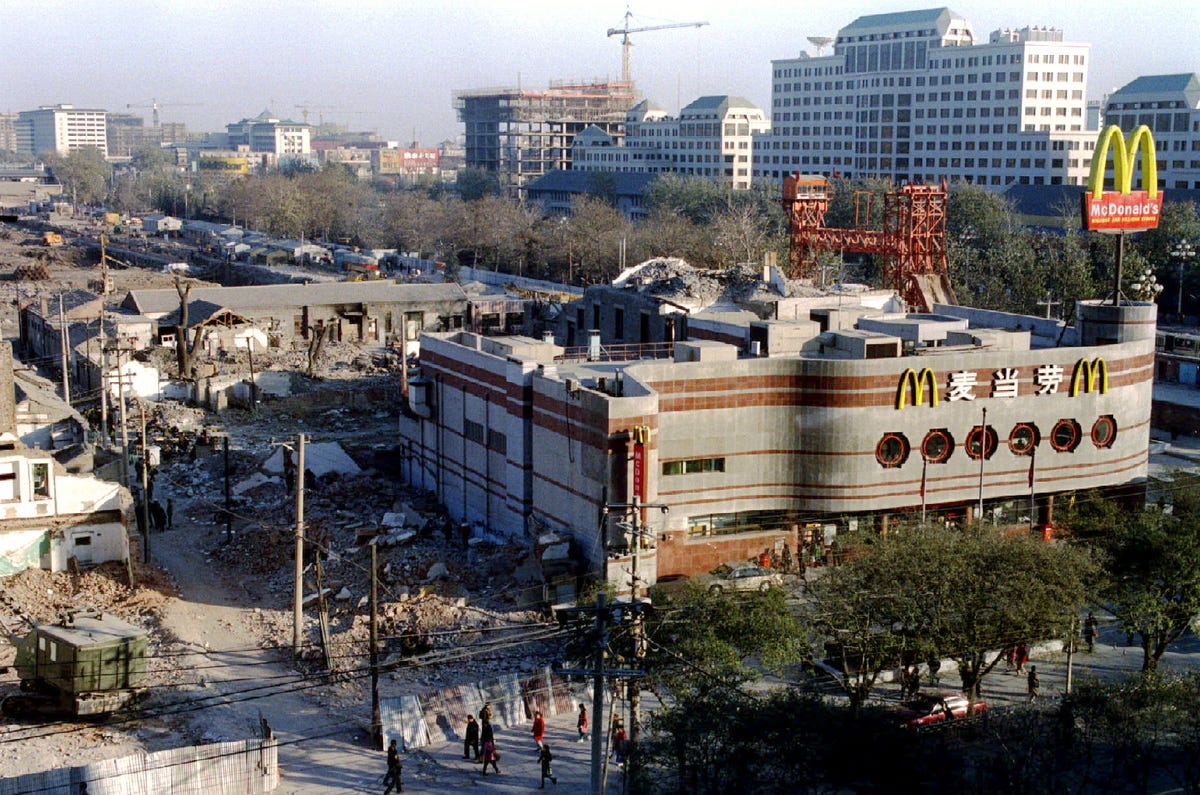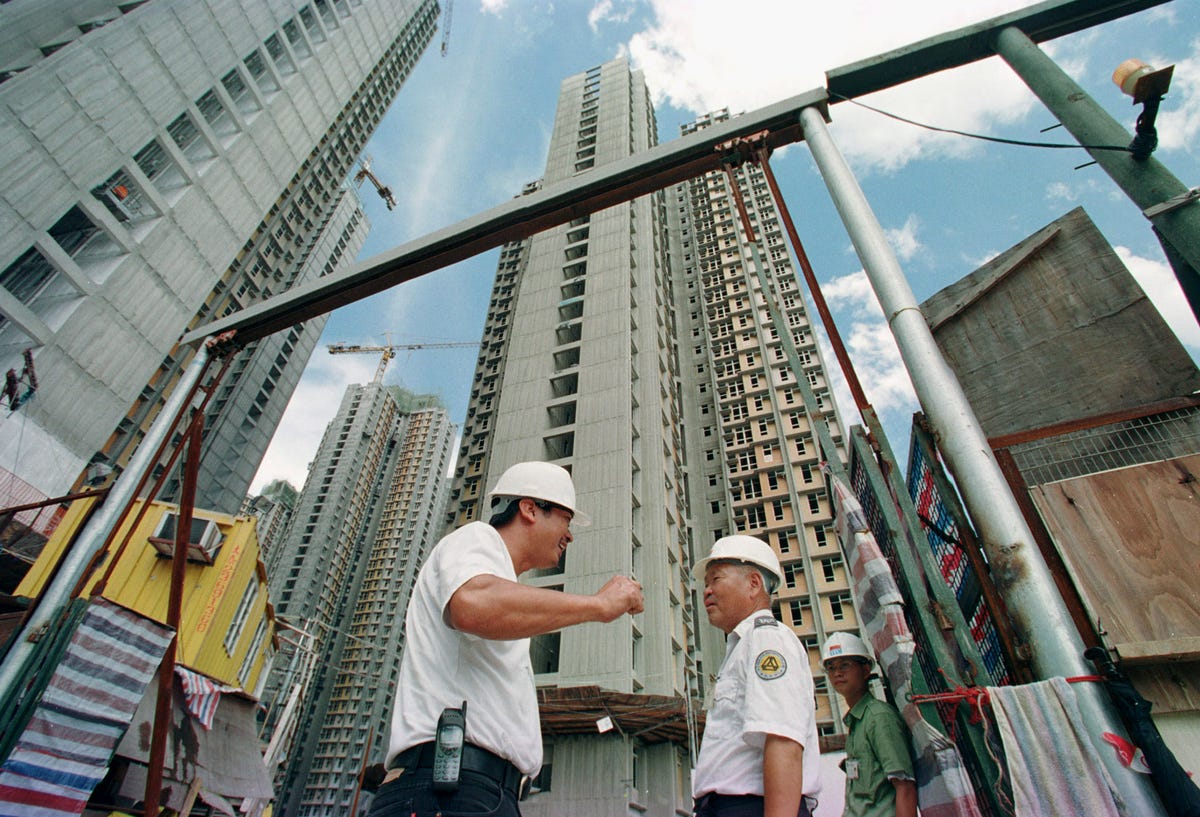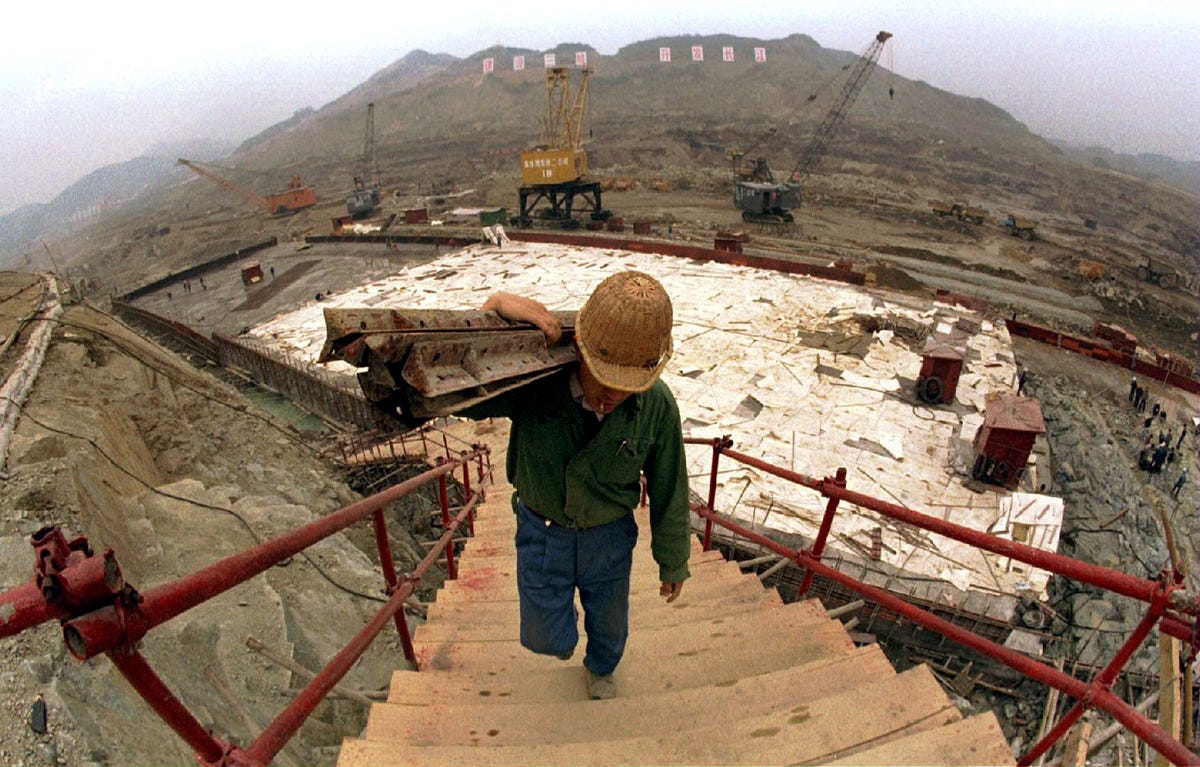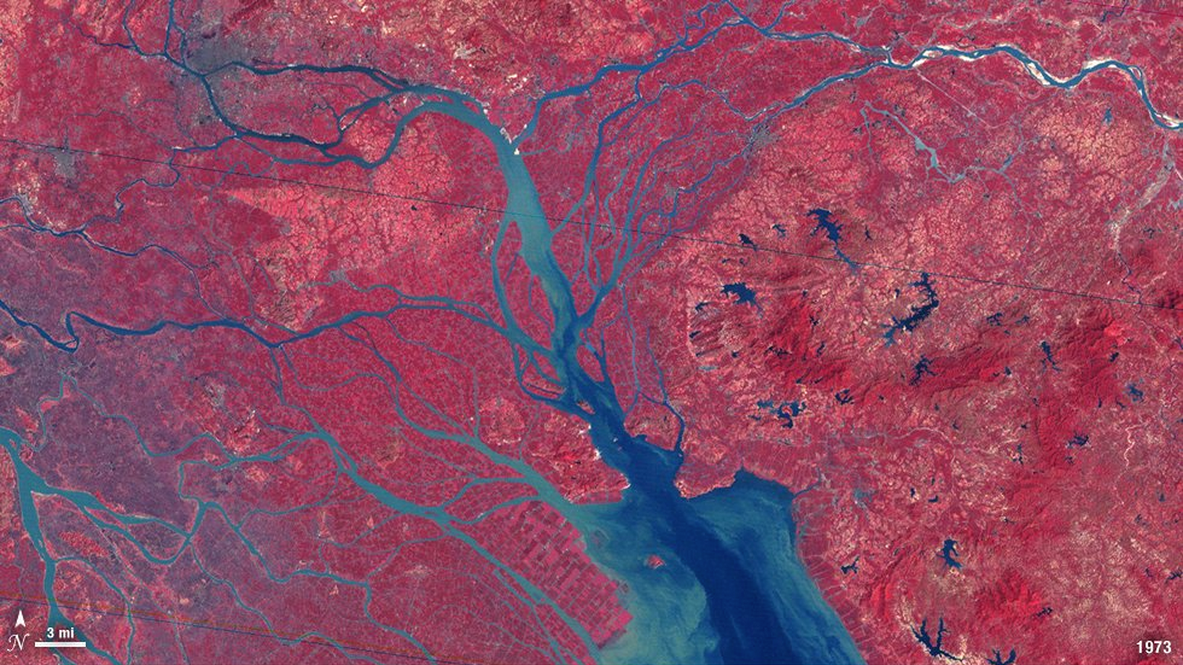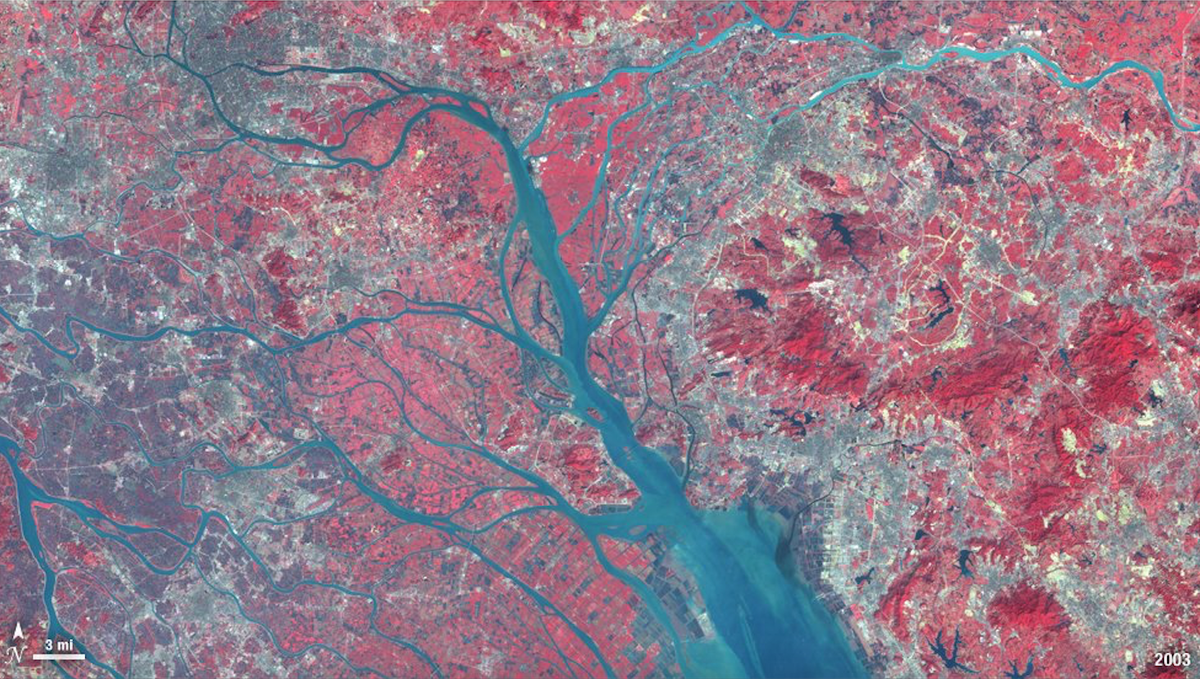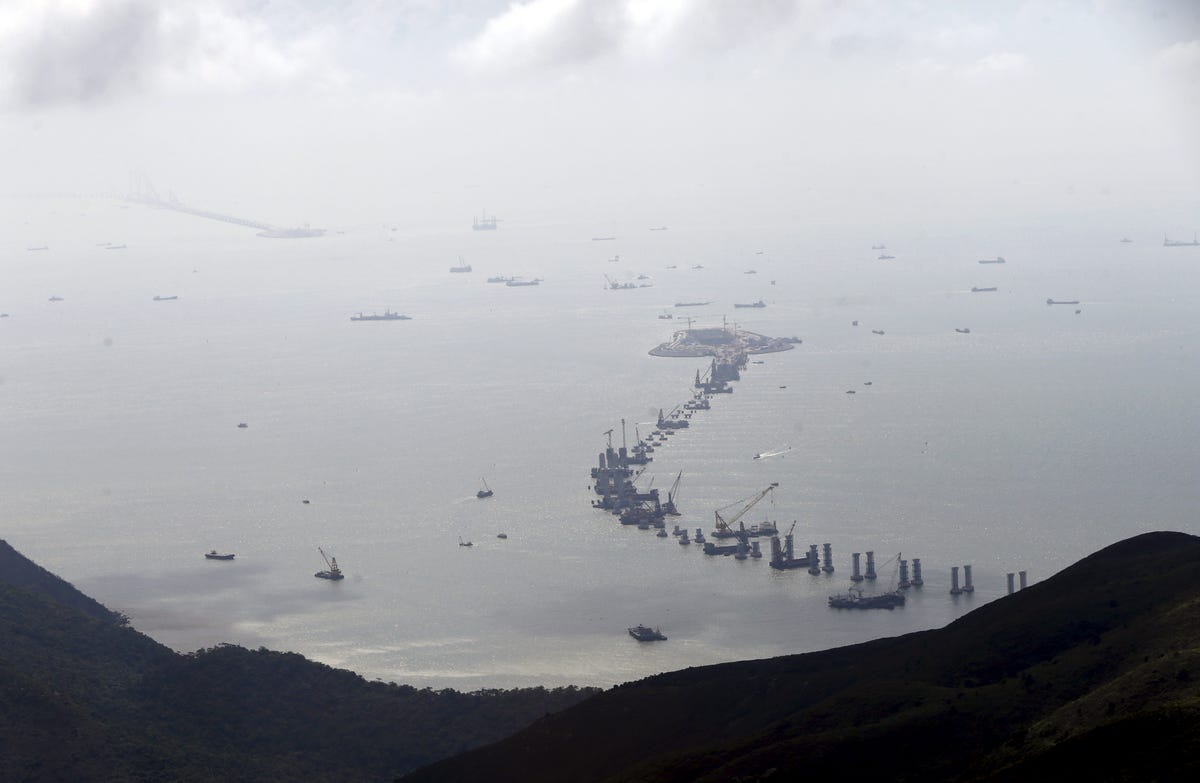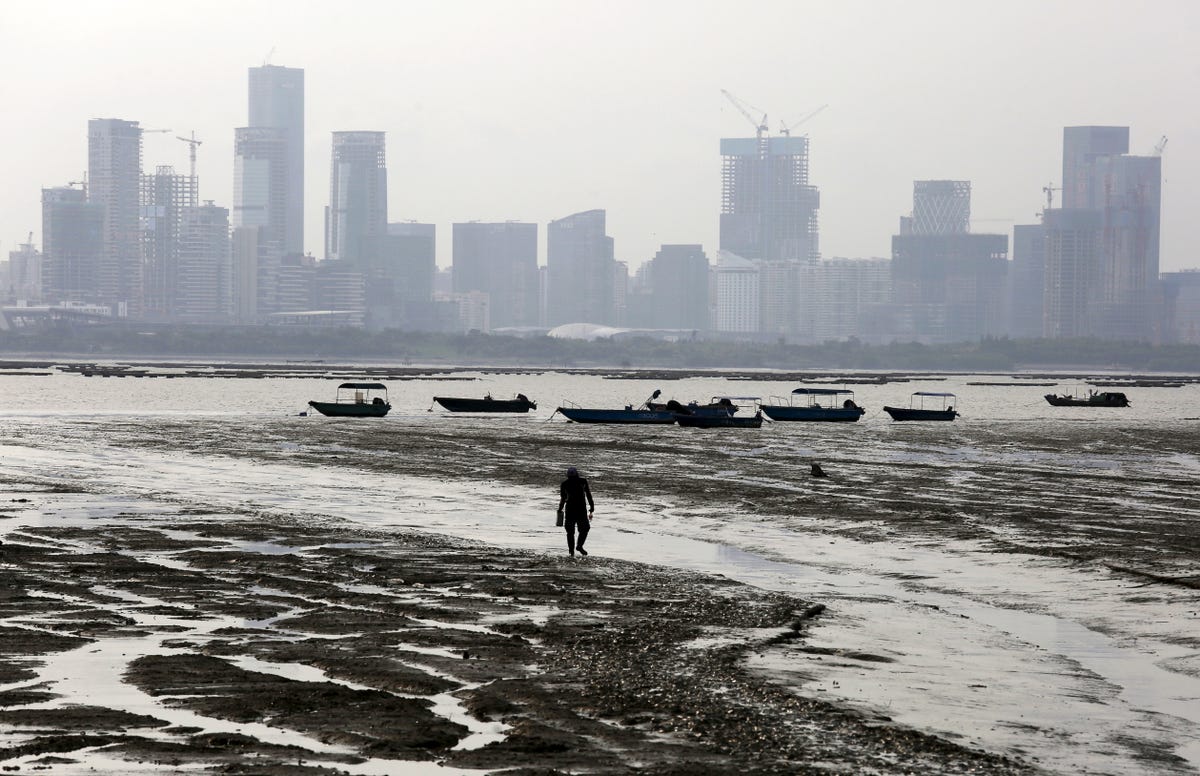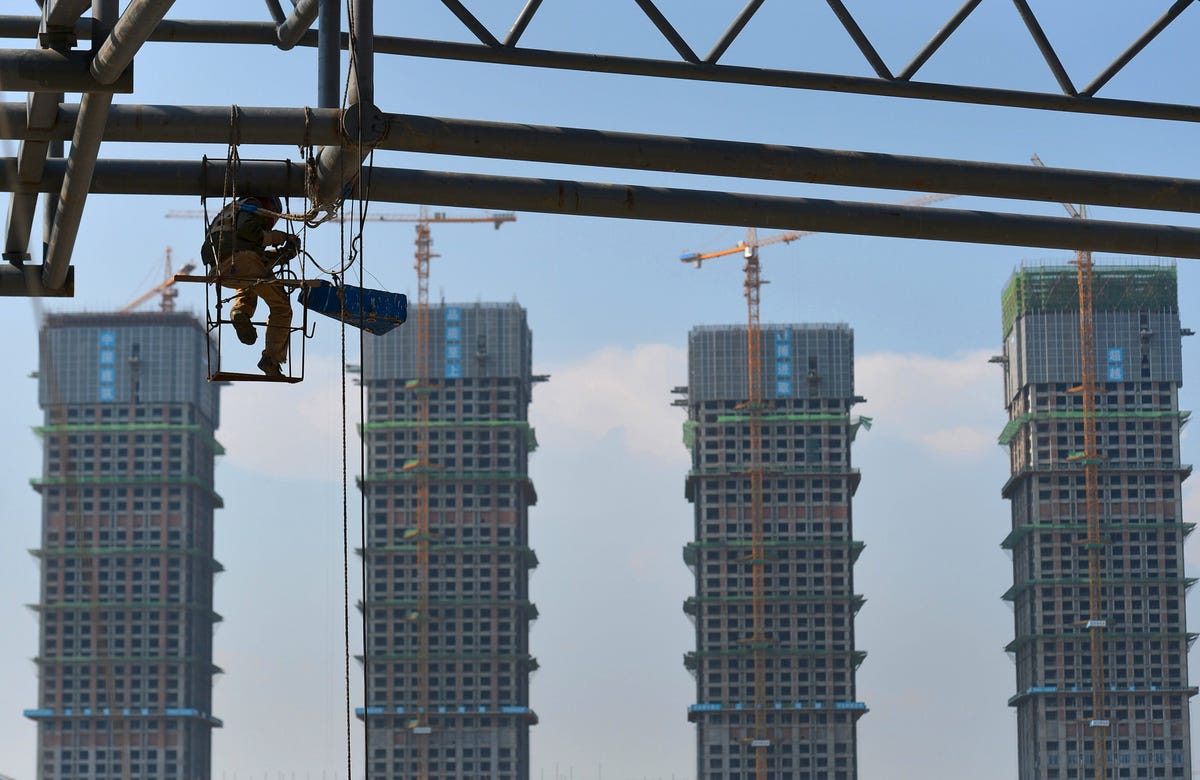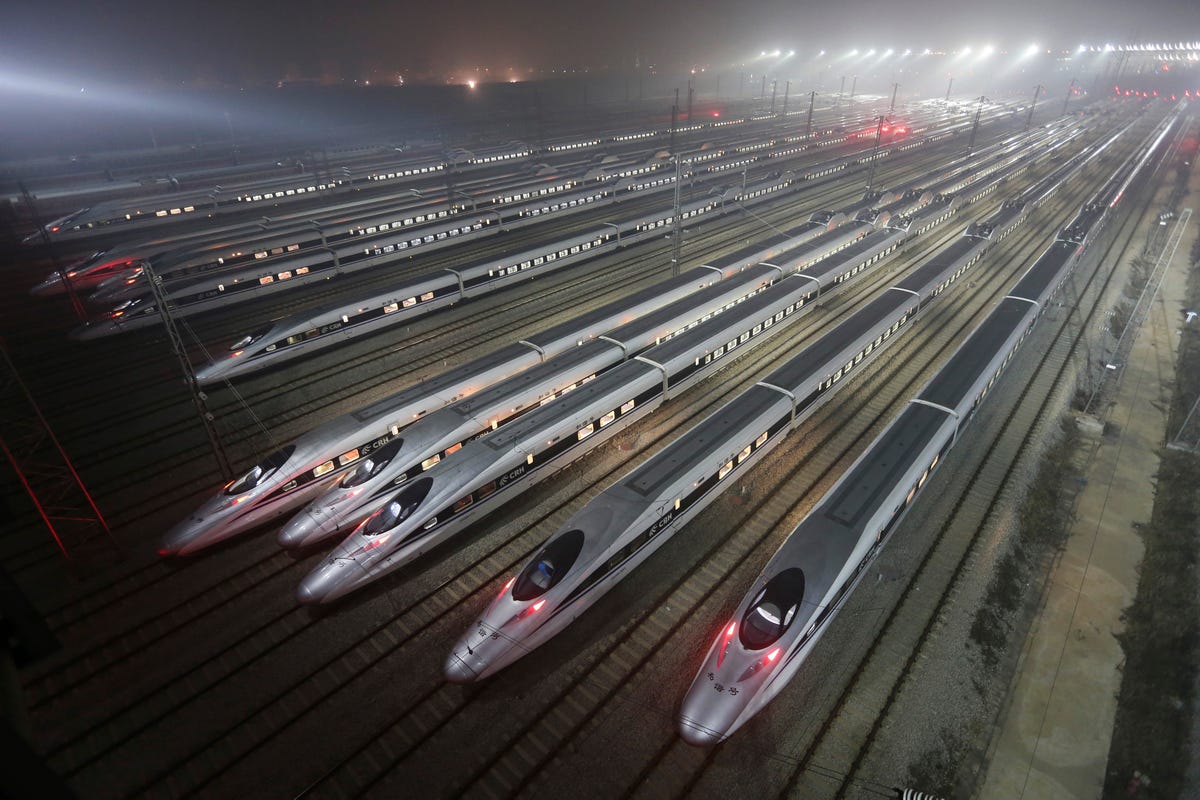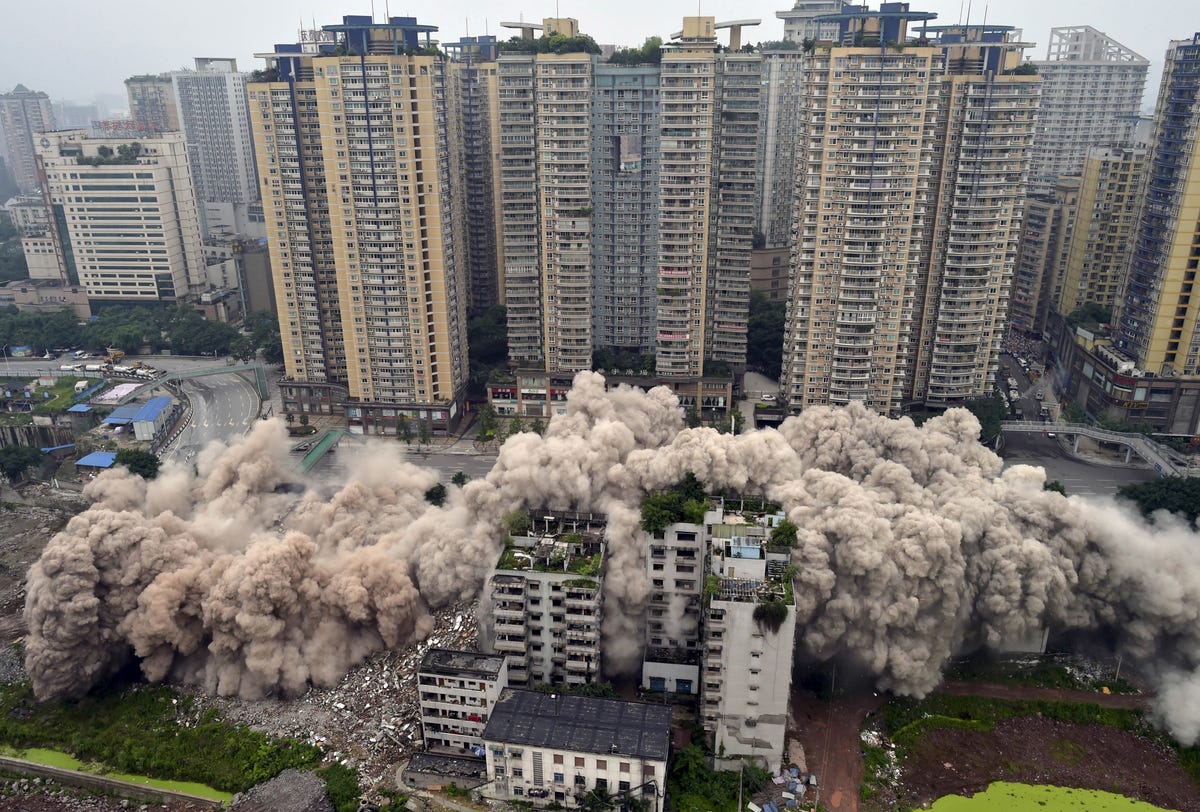Anonymous user
FULL MEMBER

- Joined
- Feb 14, 2011
- Messages
- 808
- Reaction score
- 0
I thought this was a good sign of China's progress to managing the population and providing for a city living.
Excerpt Straits Times Singapore 1st Oct 2011 (Subscription only)
BEIJING: Big is beautiful in China, but gigantic could turn out to be the fairest of them all.
More and more Chinese cities are aiming to upsize in the next decade. And despite existing problems with congestion and pollution, experts agree that being enormous is the way to go in China.
'Although our country is big, some 75 per cent of our land is unsuitable for habitation because of harsh natural conditions,' said researchers An Shuwei and Tian Xiaoting in a report in the newspaper of the Chinese Academy of Social Sciences last month.
'Developing megacities can help cut land usage, increasing the benefits to be gained from the earth.'
Such observations appeal to some half a dozen Chinese cities which plan to balloon to megacity size, a status which in China usually means a population of more than 10 million and a built-up area of more than 500 sq km.
These aspirants to mega status are mostly inland, including Shenyang in the north, western hubs Xi'an and Chengdu and a pair of big boys in Wuhan and Changsha in central China.
If successful, they will join the current club of six giants which have been largely concentrated near the coast - capital Beijing, financial hub Shanghai, port city Tianjin, western Chongqing and the bustling Guangdong twins of Guangzhou and Shenzhen.
These megacities are suitable for China, said foreign and Chinese urban planning experts, since more than a billion of its people are expected to live in cities by 2030, up from today's 660 million.
'For China, with its high population density and its land and water scarcity, megacity development is probably the most efficient option,' wrote architect Sean Chiao, from engineering and architectural giant Aecom, earlier this year.
'Chinese megacities will be hubs for jobs, culture, leisure and education, a model that will be radically different from the manufacturing-centre model that forms the basis of many Chinese cities today.'
Megacities lend themselves to efficiency, with resources, information and goods flowing to a concentration of people. Tokyo, in particular, has been an exemplar with its extraordinary transit system, compact lifestyle and strong pollution control.
McKinsey's Shanghai-based Jonathan Woetzel, who wrote Capitalist China: Strategies For A Revolutionised Economy, is also in favour of having massive cities.
He argued that the major urban centres will dovetail with the Chinese government's plan to restructure its economy in the next five years.
They will 'lead to a higher quality of investment... drive a healthier, more consumption-oriented and employment-friendly economy and society', he wrote in a paper earlier this year.
While the cities will be densely populated, they need not be crowded since each will be as massive as 800 sq km.
But the analysts' optimism towards China's megacities comes with a major caveat - they require careful planning.
In other words, they cannot follow the footsteps of the current six metropolises, which have grown big and frighteningly ugly. Traffic is horrendous, water is scarce, the air is polluted and public safety is abysmal.
Tuesday's subway collision in Shanghai , for instance, revealed that the country's shining financial hub is actually still a 'developing city', slammed state media Global Times, even though it 'had the appearance of a developed city'.
A survey released this week by the World Health Organisation also ranked Beijing as the world's 10th most polluted capital city.
These problems did not arise because Chinese cities lack planning, said economist Kai Yan of the Chinese Academy of Social Sciences last year.
It is because local officials often ignore, change or delay plans in the hope of leaving a quick imprint, securing promotions and then moving on, he observed.
To stand out, officials also prefer to create their own urban planning blueprints in their districts and counties, ignoring the macro plans designed to better serve the cities' interests.
This has to change with the new megacities.
As Mr Chiao said: 'Nothing about megacities should be organic or left to chance; they must be planned and managed in a careful and innovative way.'
If China is able to pull it off, it could lead the world in urban planning, creating gorgeous cities which are modern, eco-friendly and efficient.
'China now has a historic chance to reinvent not only its cities but the very idea of a city. The choices that its city leaders make will shape not only its buildings but also its society, and indeed the world,' said Dr Woetzel.
Excerpt Straits Times Singapore 1st Oct 2011 (Subscription only)
BEIJING: Big is beautiful in China, but gigantic could turn out to be the fairest of them all.
More and more Chinese cities are aiming to upsize in the next decade. And despite existing problems with congestion and pollution, experts agree that being enormous is the way to go in China.
'Although our country is big, some 75 per cent of our land is unsuitable for habitation because of harsh natural conditions,' said researchers An Shuwei and Tian Xiaoting in a report in the newspaper of the Chinese Academy of Social Sciences last month.
'Developing megacities can help cut land usage, increasing the benefits to be gained from the earth.'
Such observations appeal to some half a dozen Chinese cities which plan to balloon to megacity size, a status which in China usually means a population of more than 10 million and a built-up area of more than 500 sq km.
These aspirants to mega status are mostly inland, including Shenyang in the north, western hubs Xi'an and Chengdu and a pair of big boys in Wuhan and Changsha in central China.
If successful, they will join the current club of six giants which have been largely concentrated near the coast - capital Beijing, financial hub Shanghai, port city Tianjin, western Chongqing and the bustling Guangdong twins of Guangzhou and Shenzhen.
These megacities are suitable for China, said foreign and Chinese urban planning experts, since more than a billion of its people are expected to live in cities by 2030, up from today's 660 million.
'For China, with its high population density and its land and water scarcity, megacity development is probably the most efficient option,' wrote architect Sean Chiao, from engineering and architectural giant Aecom, earlier this year.
'Chinese megacities will be hubs for jobs, culture, leisure and education, a model that will be radically different from the manufacturing-centre model that forms the basis of many Chinese cities today.'
Megacities lend themselves to efficiency, with resources, information and goods flowing to a concentration of people. Tokyo, in particular, has been an exemplar with its extraordinary transit system, compact lifestyle and strong pollution control.
McKinsey's Shanghai-based Jonathan Woetzel, who wrote Capitalist China: Strategies For A Revolutionised Economy, is also in favour of having massive cities.
He argued that the major urban centres will dovetail with the Chinese government's plan to restructure its economy in the next five years.
They will 'lead to a higher quality of investment... drive a healthier, more consumption-oriented and employment-friendly economy and society', he wrote in a paper earlier this year.
While the cities will be densely populated, they need not be crowded since each will be as massive as 800 sq km.
But the analysts' optimism towards China's megacities comes with a major caveat - they require careful planning.
In other words, they cannot follow the footsteps of the current six metropolises, which have grown big and frighteningly ugly. Traffic is horrendous, water is scarce, the air is polluted and public safety is abysmal.
Tuesday's subway collision in Shanghai , for instance, revealed that the country's shining financial hub is actually still a 'developing city', slammed state media Global Times, even though it 'had the appearance of a developed city'.
A survey released this week by the World Health Organisation also ranked Beijing as the world's 10th most polluted capital city.
These problems did not arise because Chinese cities lack planning, said economist Kai Yan of the Chinese Academy of Social Sciences last year.
It is because local officials often ignore, change or delay plans in the hope of leaving a quick imprint, securing promotions and then moving on, he observed.
To stand out, officials also prefer to create their own urban planning blueprints in their districts and counties, ignoring the macro plans designed to better serve the cities' interests.
This has to change with the new megacities.
As Mr Chiao said: 'Nothing about megacities should be organic or left to chance; they must be planned and managed in a careful and innovative way.'
If China is able to pull it off, it could lead the world in urban planning, creating gorgeous cities which are modern, eco-friendly and efficient.
'China now has a historic chance to reinvent not only its cities but the very idea of a city. The choices that its city leaders make will shape not only its buildings but also its society, and indeed the world,' said Dr Woetzel.



 ) with a nominal GDP value of US$38 trillion. Fuelled by a strong urbanisation rate, a favourable corporate environment, huge infrastructure investment and the largest working age population, the Chinese economy will finally transform itself from being the manufacturing site of the globe to one of the biggest and largest consumer markets in the entire world.
) with a nominal GDP value of US$38 trillion. Fuelled by a strong urbanisation rate, a favourable corporate environment, huge infrastructure investment and the largest working age population, the Chinese economy will finally transform itself from being the manufacturing site of the globe to one of the biggest and largest consumer markets in the entire world.






